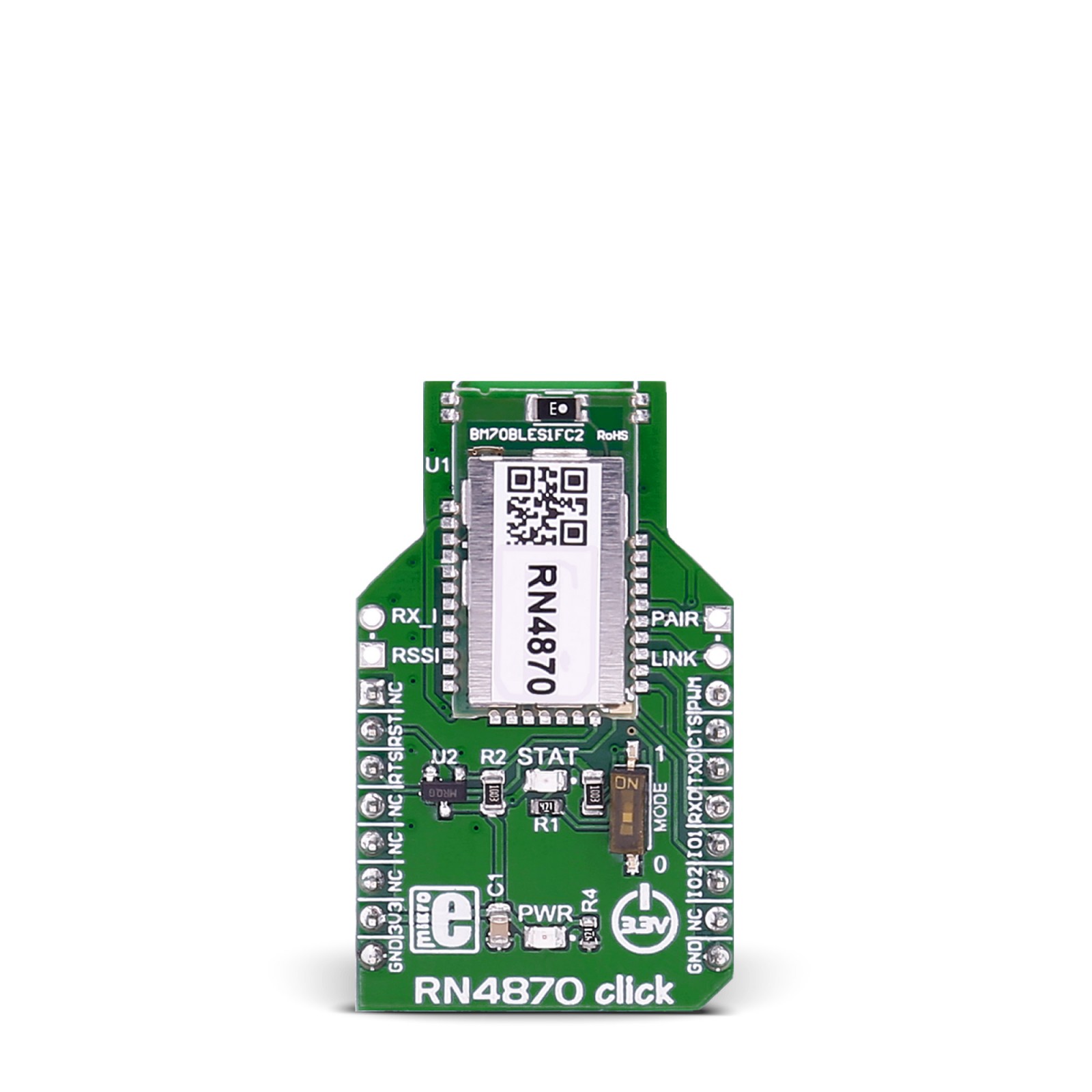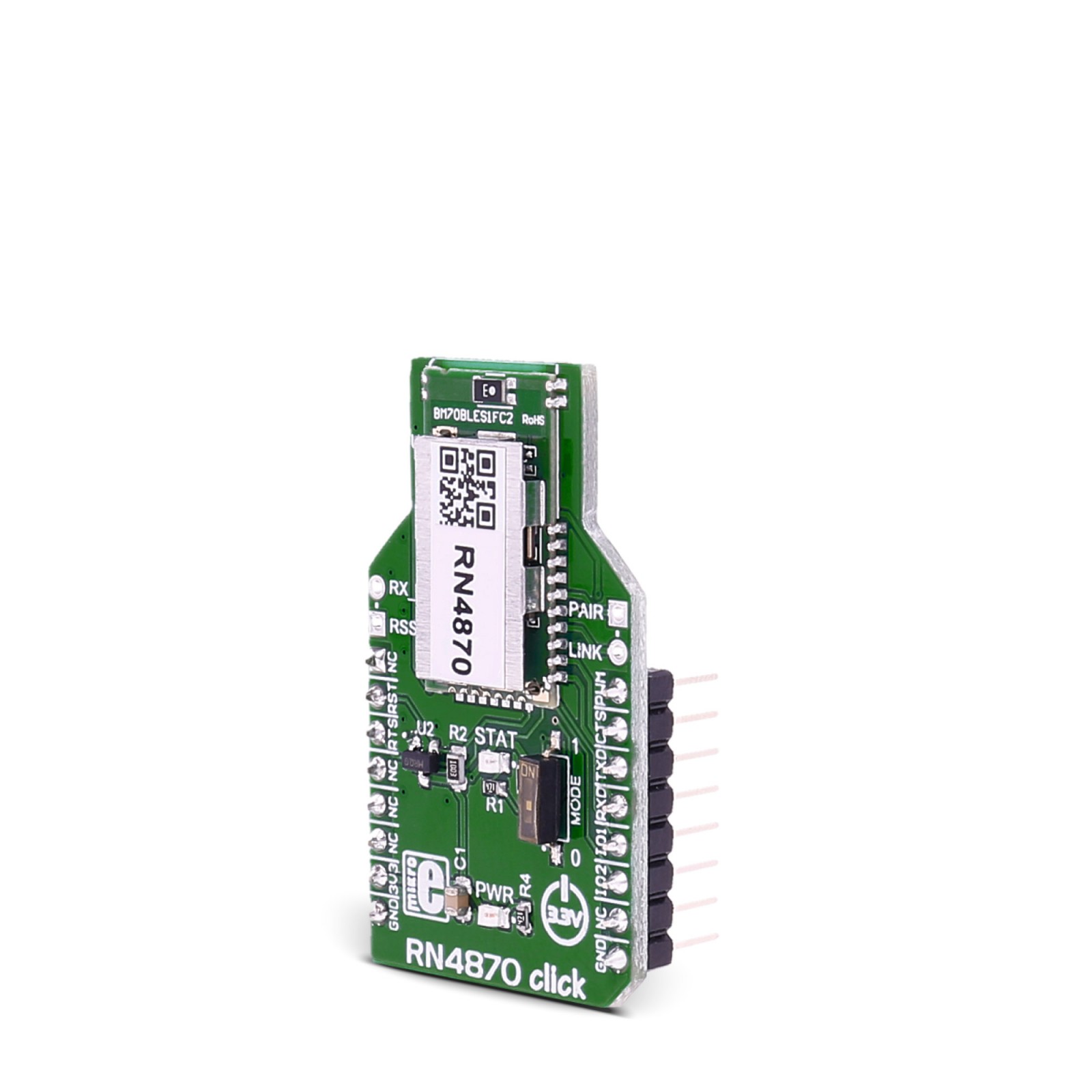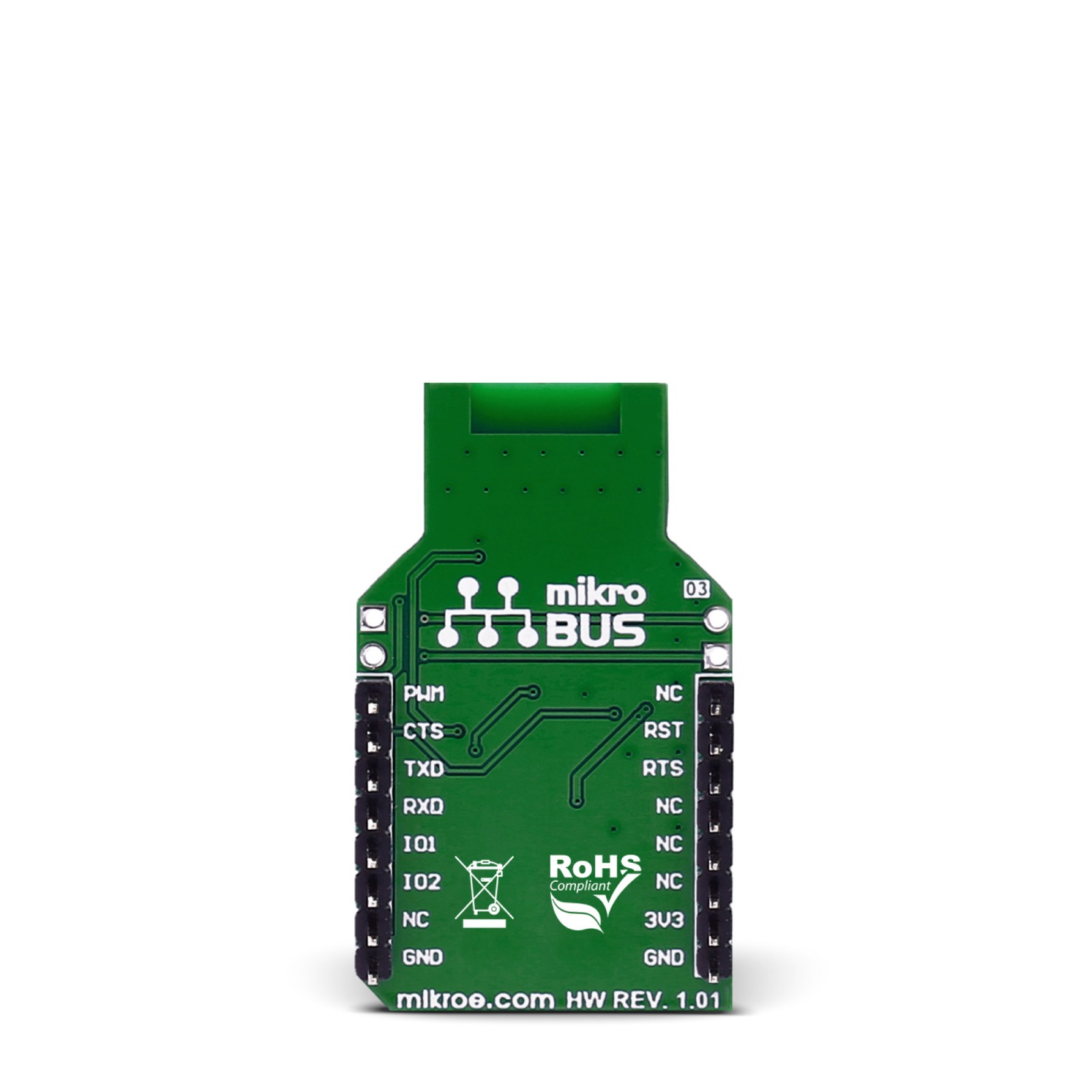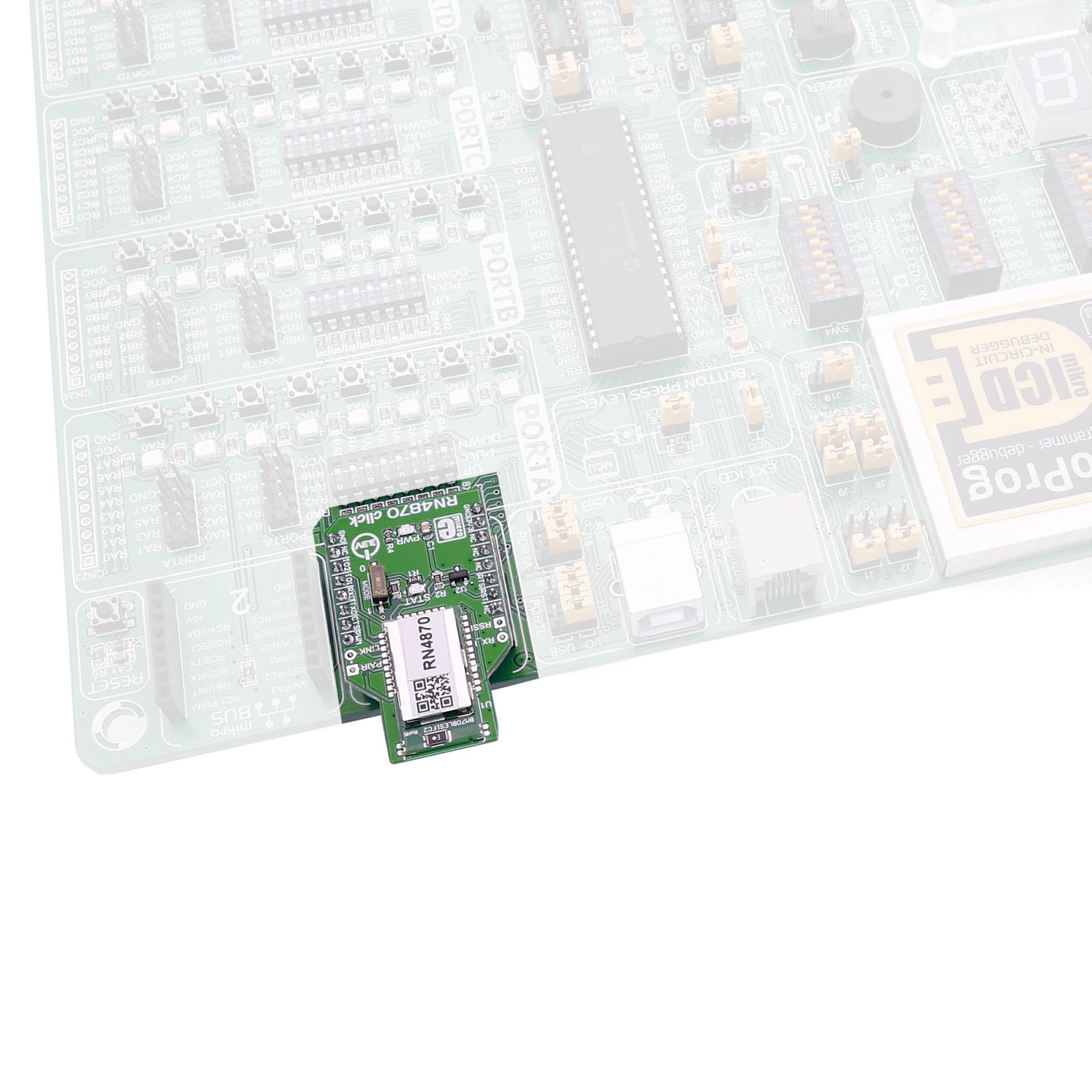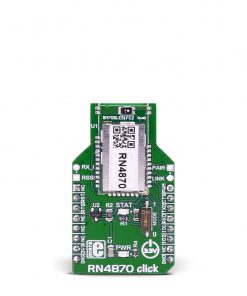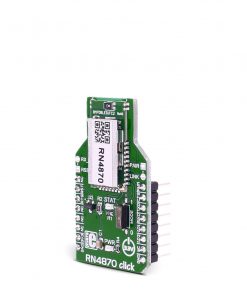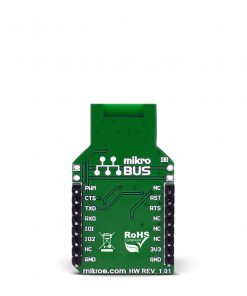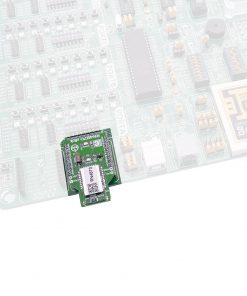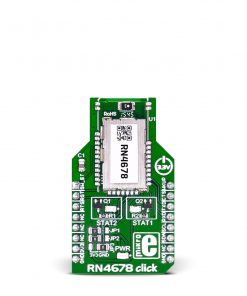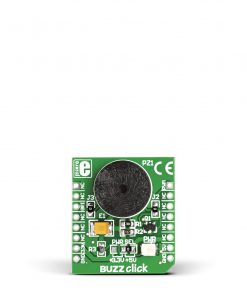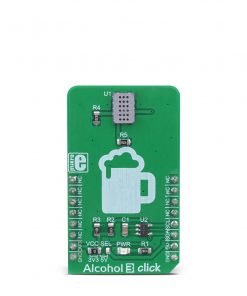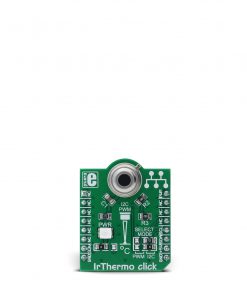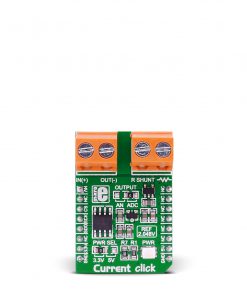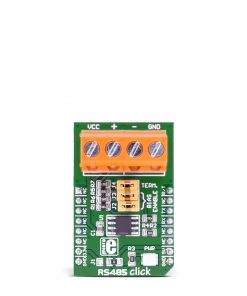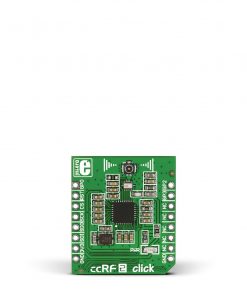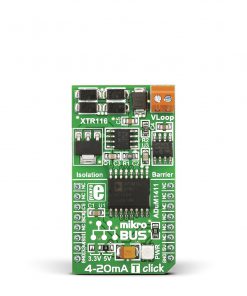RN4870 Click
R735.00 ex. VAT
RN4870 Click is a compact add-on board that provides Bluetooth wireless connectivity for any embedded application. This board features the RN4870, a Bluetooth 4.2 Low Energy module from Microchip. It integrates Bluetooth Low Energy (BLE), Bluetooth stack, and an RF power amplifier into one solution. The module uses GFSK modulation over the onboard Bluetooth chip antenna to achieve data rates of up to 10Kbps. This Click board™ makes the perfect solution for the development of health/medical devices, sports activity/fitness meters, beacon applications, internet of Things (IoT)sensor tags, remote controls, wearable smart devices and accessories, and more.
RN4870 Click is supported by a mikroSDK compliant library, which includes functions that simplify software development. This Click board™ comes as a fully tested product, ready to be used on a system equipped with the mikroBUS™ socket.
Stock: Lead-time applicable.
| 5+ | R698.25 |
| 10+ | R661.50 |
| 15+ | R624.75 |
| 20+ | R601.23 |

